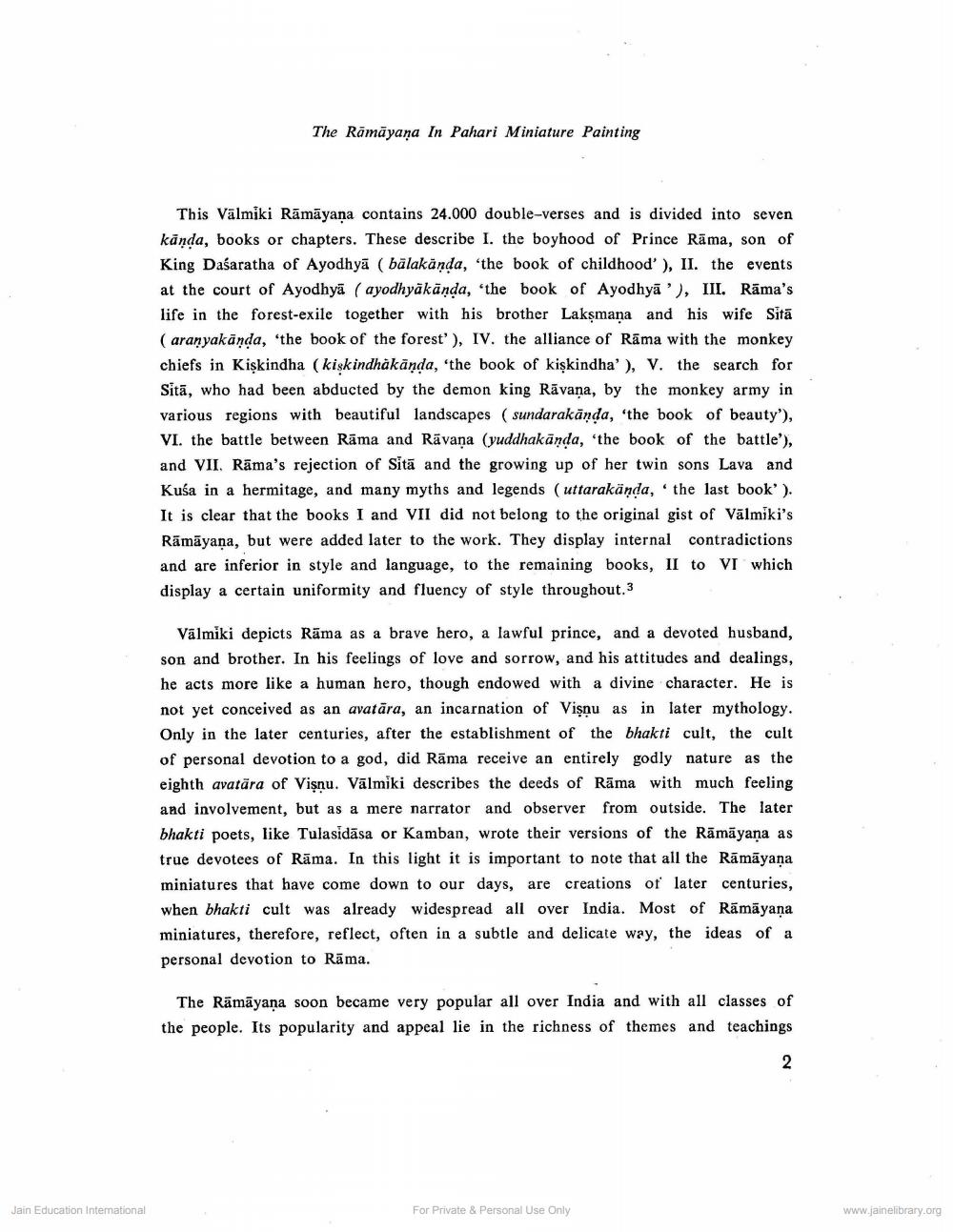________________
Jain Education International
The Rāmāyaṇa In Pahari Miniature Painting
This Valmiki Rāmāyaṇa contains 24.000 double-verses and is divided into seven kanda, books or chapters. These describe I. the boyhood of Prince Rāma, son of King Dasaratha of Ayodhya (balakända, 'the book of childhood'), II. the events at the court of Ayodhya ( ayodhyākända, the book of Ayodhya'), III. Rāma's life in the forest-exile together with his brother Lakṣmaṇa and his wife Sitā (aranyakanda, the book of the forest'), IV. the alliance of Rama with the monkey chiefs in Kişkindha (kiṣkindhākāṇḍa, 'the book of kişkindha'), V. the search for Sitā, who had been abducted by the demon king Rāvana, by the monkey army in various regions with beautiful landscapes (sundarakanda, 'the book of beauty'), VI. the battle between Rama and Ravana (yuddhakanda, 'the book of the battle'), and VII. Rama's rejection of Sita and the growing up of her twin sons Lava and Kusa in a hermitage, and many myths and legends (uttarakända, the last book'). It is clear that the books I and VII did not belong to the original gist of Valmiki's Rāmāyaṇa, but were added later to the work. They display internal contradictions and are inferior in style and language, to the remaining books, II to VI which display a certain uniformity and fluency of style throughout.3
Valmiki depicts Rāma as a brave hero, a lawful prince, and a devoted husband, son and brother. In his feelings of love and sorrow, and his attitudes and dealings, he acts more like a human hero, though endowed with a divine character. He is not yet conceived as an avatāra, an incarnation of Visnu as in later mythology. Only in the later centuries, after the establishment of the bhakti cult, the cult of personal devotion to a god, did Rama receive an entirely godly nature as the eighth avatara of Visnu. Valmiki describes the deeds of Rama with much feeling and involvement, but as a mere narrator and observer from outside. The later bhakti poets, like Tulasidasa or Kamban, wrote their versions of the Rāmāyaṇa as true devotees of Rama. In this light it is important to note that all the Rāmāyaṇa miniatures that have come down to our days, are creations of later centuries, when bhakti cult was already widespread all over India. Most of Rāmāyaṇa miniatures, therefore, reflect, often in a subtle and delicate way, the ideas of a personal devotion to Rāma.
The Rāmāyaṇa soon became very popular all over India and with all classes of the people. Its popularity and appeal lie in the richness of themes and teachings
For Private & Personal Use Only
2
www.jainelibrary.org




